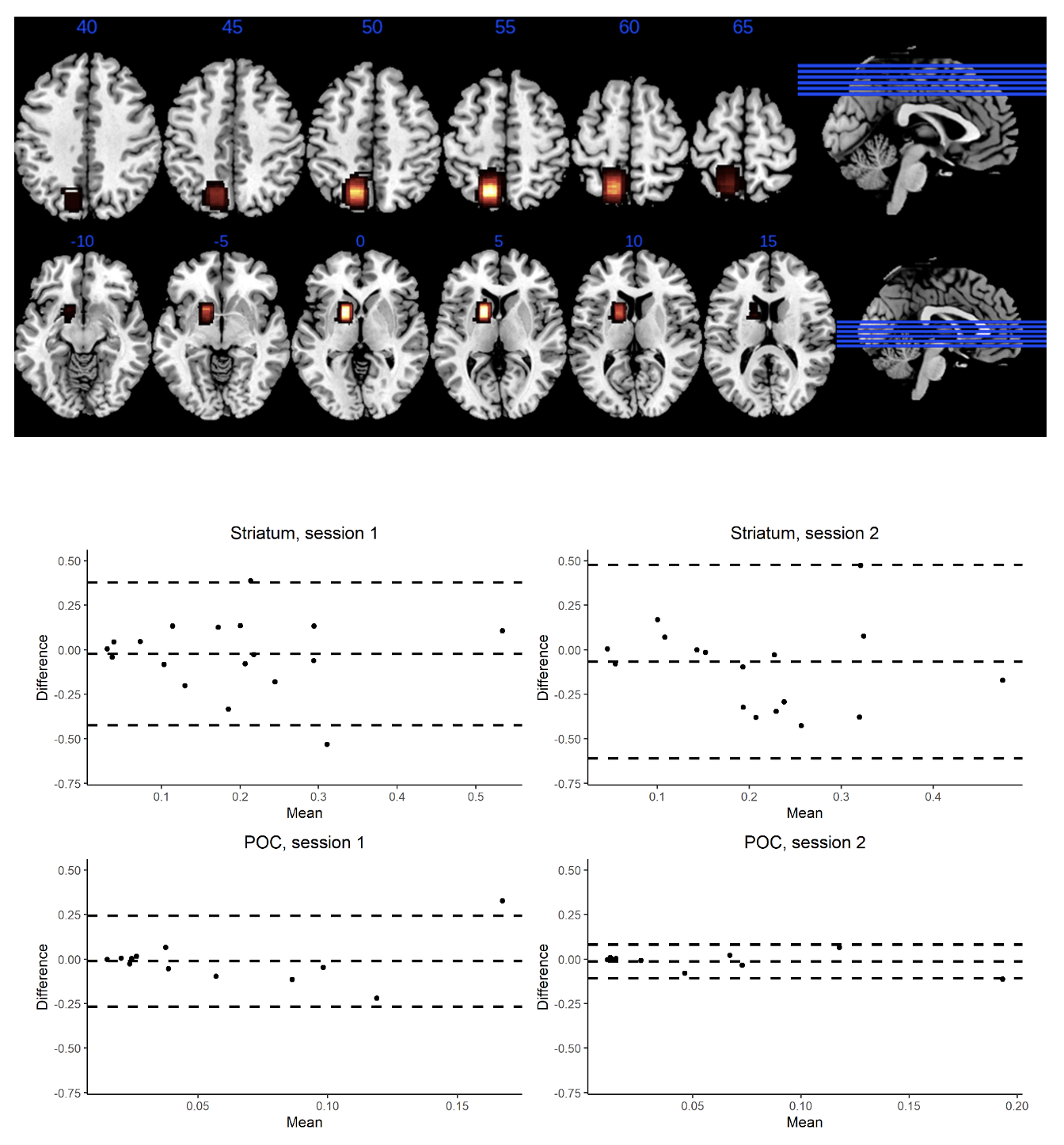CHOMRS
Reliability of magnetic resonance spectroscopy measures of brain metabolites

🧠 Magnetic resonance spectroscopy (MRS), enables us to measure the concentration of metabolites in the humans. The technique is very promising in delivering experimental solutions for a number of questions about brain and body function in health and disease.
🤔 The technique however is also very novel, with a lot of open questions about optimising data acquisition and data analysis, and even how reliable the measurements actually are, both across and within individuals. To advance our use of this technique and make it more broadly available to other scientists, we need to establish the reliability of the metabolite measurements we acquire with our spectroscopy system. To do this, the study investigated the reliability of the metabolite signal in different brain locations, both across different participants, and across different sessions in the same participant. The latter will enable us to apply the technique in intervention studies (e.g. to ask how brain metabolites change when we supplement individuals’ diets, or when we administer certain drugs).
🖥️ An interesting feature of this study is that because we are not interested in the activity of the brain, only in the concentration of specific neurotransmitters, we allow for participants to watch whatever they like whilst in the scanner! As each session was approximately 2 hours long, this was significantly better than looking at a fixation cross!
🕰️ Results/publications and open-access data coming soon!
🌐 Team:
University of Reading:
Professor Anastasia Christakou (Centre for Integrative Neuroscience and Neurodynamics)
Dr Brendan Williams (Centre for Integrative Neuroscience and Neurodynamics)
Dr Gabriella Rossetti (Centre for Integrative Neuroscience and Neurodynamics)
Dr Shan Shen (Centre for Integrative Neuroscience and Neurodynamics)
(Images courtesy of Dr Brendan Williams)